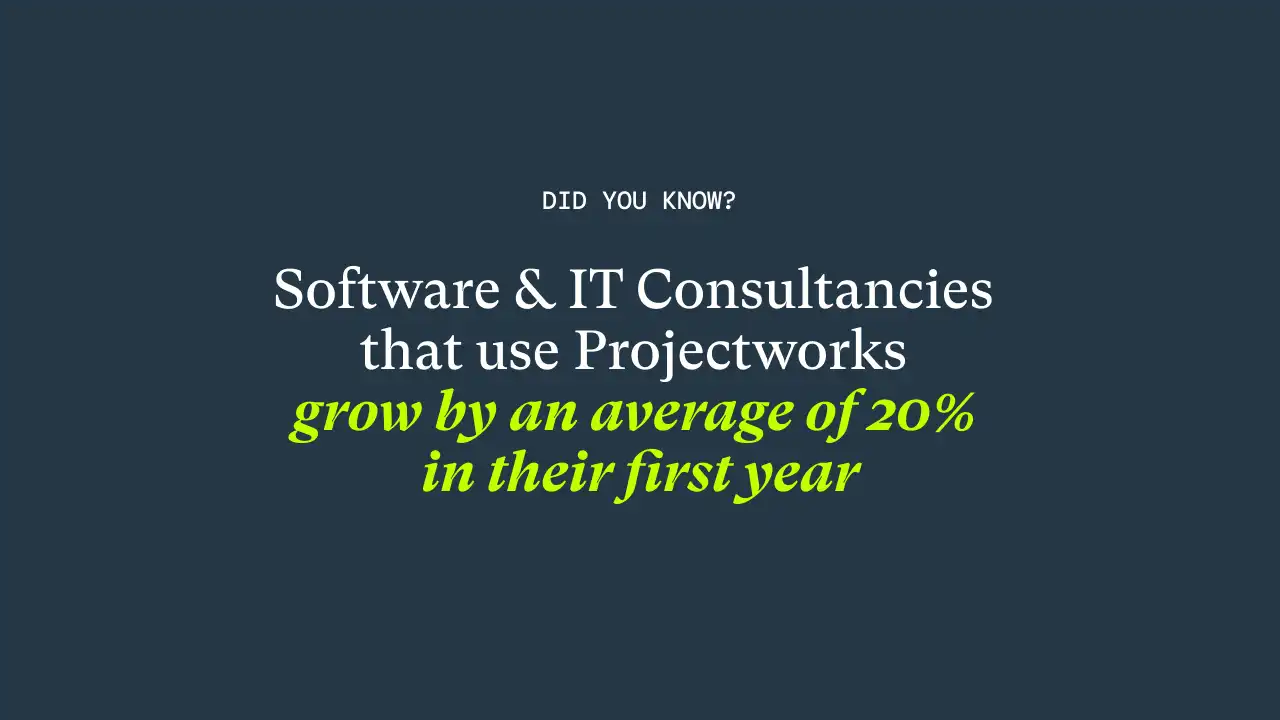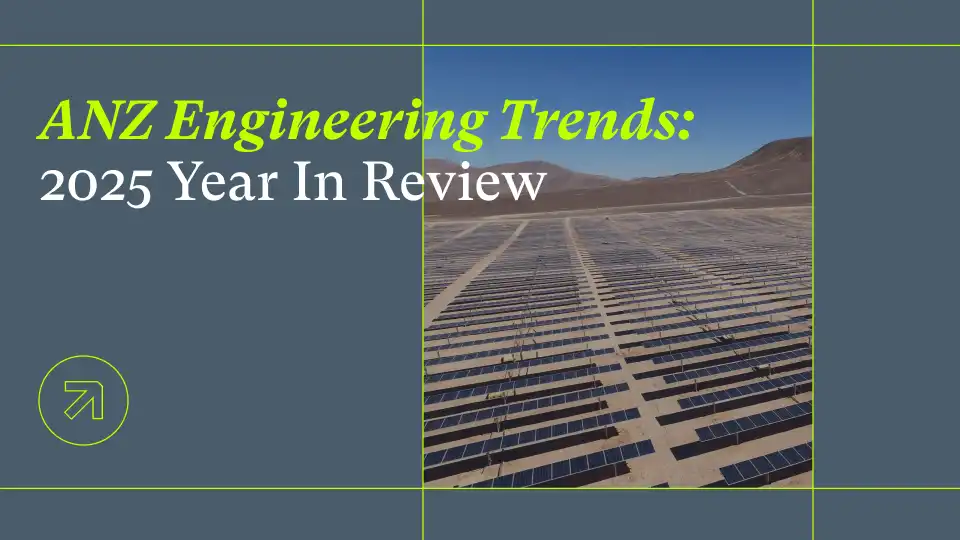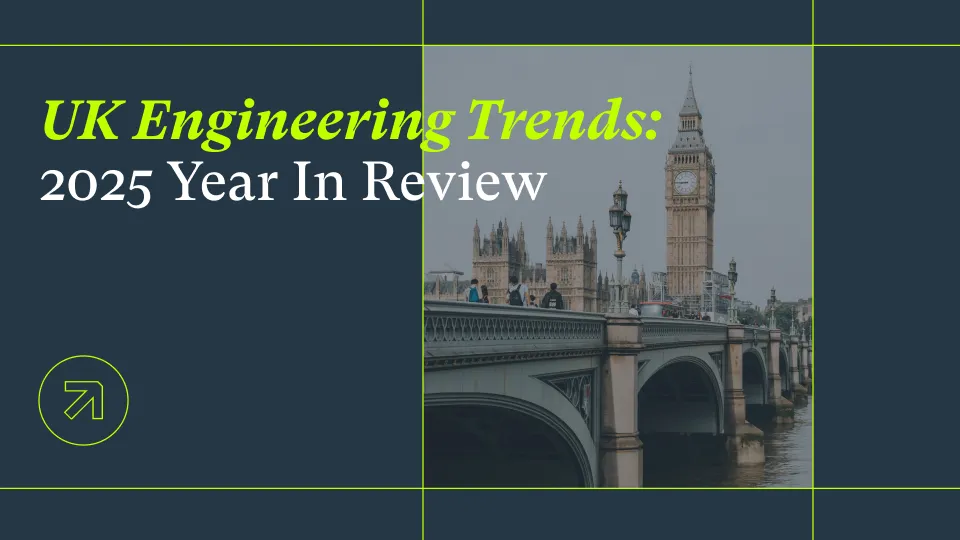US Software & IT Consulting Trends: 2025 Year In Review

In a year shaped by AI, Software Services Firms and IT Consultancies across the United States are in a widespread reinvention moment. In this guide we break down how firms are navigating the shift, and what strategies are fuelling growth for small and mid sized firms.
Across 2025, clients kept spending, but they bought differently – with widespread AI adoption, buyers wanted proof in week two, not promises for week twelve. Firms that showed working software early, kept costs visible, and kept senior people on the hard problems moved forward. Read on for the sofware trends that shaped 2025, and the plays that will help leaders enter 2026 with momentum.
Amidst Widespread Uncertainty, Consulting Firms That Demonstrated Clear Proof Beat Those Making Promises
Project budgets didn't vanish, but they did shift to partners who could show value quickly. Client shortlists favored teams with a proven track record in their niche, a working prototype, and a clear week-by-week path to production.
Buyers looked at how you deliver, not just what you deliver. Firms that used one standard start for every project moved fast and earned trust.
Security, privacy, and software supply chain questions arrived in discovery, not at the end. Buyers asked how you handle sensitive data, whether you track open-source components, and what your incident steps look like. Small firms that answered clearly with a one-page playbook kept deals moving. In a crowded market, a small firm that is low risk to hire beats a large firm that is slow to answer.
Project pricing matched how the work got done, and invoicing software made billing simpler
As AI sped up parts of project delivery, clients asked for prices that matched progress. Milestone fees remained popular – ship a slice, get paid. When both sides could measure a result the same way, a portion of the fee tied to that outcome. A practical approach is hybrid pricing: use a fixed fee where the scope is clear and repeatable. Use time-based pricing where it is not. This balance kept teams honest, cash timely, and relationships healthy. Firm’s that used invoicing software built specifically for professional services firms billed clients easier and got paid faster.
AI in Software Services Got funded, But Return On Investment (ROI) Had To Be Clear
Clients paid for AI that saved hours or improved quality in ways they could see. Practical wins led the way. Coding assist for delivery teams. Auto-generated tests. Assistants inside known workflows. Data cleanup that cut cloud and storage costs. Pilot theatre faded. Clear outcomes stayed.
Firms that packaged small, repeatable AI add-ons into existing work won more often than those selling broad transformation. Attaching a tight AI upgrade to a running project felt safe to buyers, produced numbers quickly, created internal advocates, and opened the door to bigger projects and repeat business.
Senior Software Services Talent Shortages Meant Thinking Differently About How to Fuel Growth
Pipeline alone did not decide outcomes. Senior ICs and tech leads set the real pace. Hiring took longer and retention costs rose. Leaders who grew ensured their senior software talent were resourced as efficiently and as profitably as possible.
How US Software Firms Grew Without Hiring More People
Winners narrowed bids to work they could deliver at pace and price with confidence. They planned to the capacity they actually had and protected senior review time. They cut status meetings, cleaned handoffs, standardised repeat tasks, and reused proven components. They said no to low-margin work that would clog the bench. In practice this meant leaning on resource management software for a live capacity view so scenarios could be tested before proposals went out and the knock-on effects on active projects were clear.
Putting AI and Professional Services Automation Software to work
AI mattered when it returned hours to delivery teams. Useful gains showed up in proposal prototypes, UX research analysis, draft code, unit tests, and meeting notes that landed as actions with owners. Onboarding packs helped new engineers enter active projects with context. Reporting in PSA Software enabled finance teams to track budget burn and projected effort each week instead of waiting for month end. Easy-to-use time tracking software and invoicing software that mirrors project progress made the feedback loop faster and more accurate.
Small And Mid-Sized Software Consultancies That Own A Niche, Win More Work And Grow Faster
For specialist consultancies, narrow offers beat generalist claims. Clients preferred partners who take one problem from start to finish with a repeatable playbook and a team that does this work every week. A tight niche shortens sales cycles, reduces buyer risk, and smooths delivery. It lets small and mid-sized firms show proof quickly, reuse checklists and code, staff with confidence, and hold margin. It also makes marketing cleaner because the story is simple, wins are comparable, and the next client can see themselves in the last result.
PSA Software Enabled Consistent Delivery That Strengthened Client Trust And Maximized Profitability
In a market that prizes predictability, clients looked for partners with a standard way to branch, test, secure, and release. You do not need a large platform team. You need a reusable starter kit that any squad can use. Shops that rebuilt their approach each project burned time, created risk, and lost confidence. The target picture is clear. Look like a studio with a small handful of productized offers and a delivery kit that makes week two look like week two on your last successful job.
Resource Management And Project Delivery Habits that Helped Software Firms Grow in 2025
Firms that grew did not rely on last-minute heroics. They nailed the basics and made them visible.
- A standard weekly cadence. What finished, what slipped, what happens next, and who owns it – all powered by reporting in your PSA software.
- Honest resource planning with the people you have, not the team you hope to hire.
- Early risk visibility in your PSA Software, with forecast versus remaining effort in plain numbers.
- Clean time and expense capture, and fast approvals so commercial calls could be made sooner.
- Project changes raised early and priced fairly, which kept relationships steady.
A small operational muscle made a big difference. When risk was visible, intervention happened while there was still time to protect margin.
The Outlook For Growth in 2026 For US Software Consultancies
AI will keep pushing expectations forward. Buyers will continue to fund partners who show value quickly, manage risk in the open, and keep senior people on the hard problems. Two paths are likely, and both reward the same habits. If budgets accelerate, firms with calm delivery engines will convert pipeline into predictable revenue and scale without burning their people. If scrutiny stays high, the same discipline still wins through sharper bid selection, resource management and capacity planning, and tight change control. Either way, build the engine that makes performance transparent and predictable.

Where Projectworks PSA Software Fits
The operating model described above becomes much easier when your core systems sit together. A modern PSA software platform like Projectworks connects a live capacity view, time and expenses, resource management, invoicing and reporting & insight that triggers action. We built Projectworks to make that connection practical for software services leaders. If you want the weekly rhythm, the real-time view, and the calmer delivery engine described here, book a Projectworks demo today.
Related Articles

2025 AU Architecture Growth Trends: A Year In Review
Across Australian Architects in 2025, the brief kept getting wider while timelines stayed tight. Clients asked for cooler streets, better shade and movement, water capture and reuse, clear Country pathways, early biodiversity checks and build-ability in view. The studios that grew recognised the pressure early, set clearer scope lines and ran a calmer delivery engine that made decisions weekly instead of monthly.

2025 In Review: The Trends Shaping AU & NZ Engineering Firm Growth
In 2025 for the Engineering Sector down under, pipeline was the conversation irrespective of what side of the ditch your firm sat on. In Australia the pipeline grew quickly across energy, transport, water and social infrastructure. However, turning that momentum into consistent, profitable delivery was still hard for many firms. In New Zealand the public pipeline only became visible toward the end of the year. It was a tougher run, and leaders had to think differently about growth. The firms that moved ahead in both markets built a high performance delivery engine and ran it with calm discipline, thanks to visibility of all key project and business profitability metrics.
